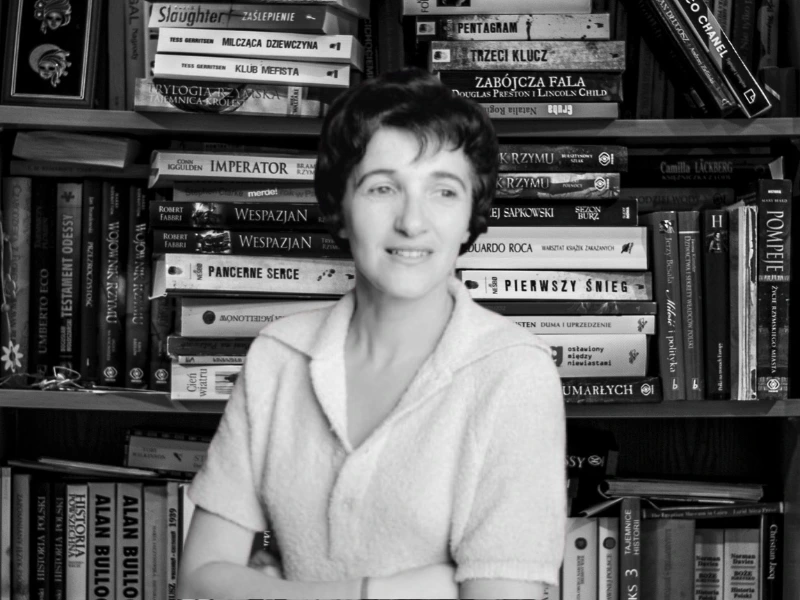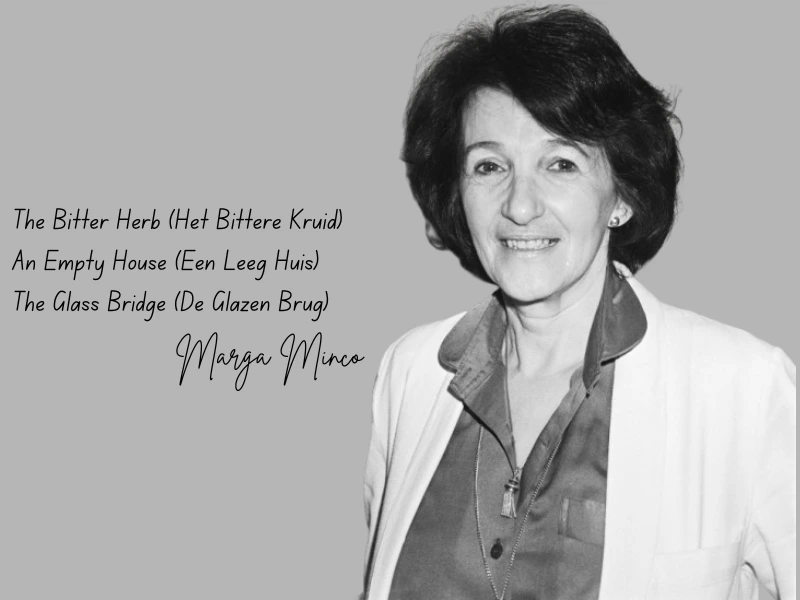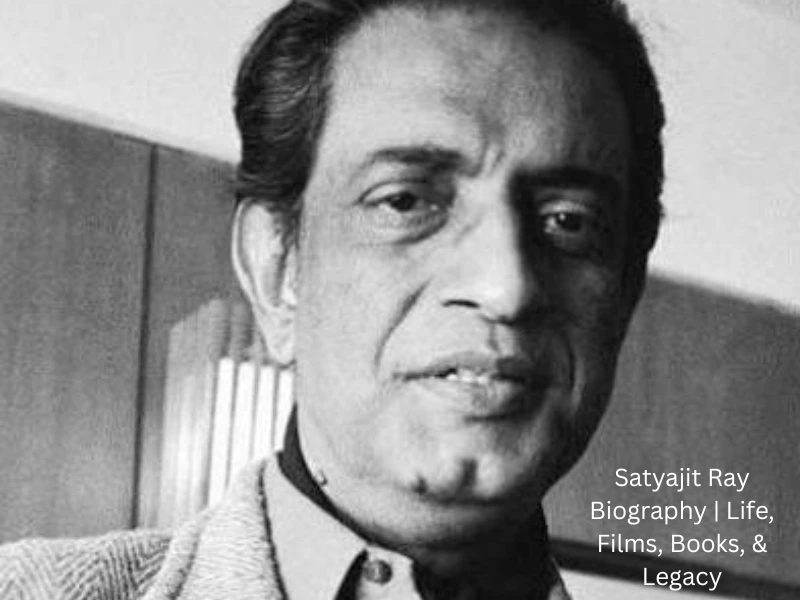Marga Minco Biography: Life, Works, and Legacy of the Dutch Author
Marga Minco is one of the most acclaimed Dutch writers. Her writing reflects very vividly and poignantly the dreadful aspects of World War II and the Holocaust. In a very simple, powerful manner, her writings touch upon the depths of human emotions about suffering and survival. Marga Minco’s stories bring into light how war can have devastating effects on the life of an ordinary individual and make them part of literature history in the modern era.
Personal Information
- Full Name: Sara Menco (Professionally known as Marga Minco)
- Date of Birth: March 31, 1920
- Place of Birth: Ginneken, near Breda, Netherlands
- Nationality: Dutch
- Family Background:
- Marga Minco was born into a Jewish family.
- Her parents and siblings perished in the Holocaust, and she was the sole survivor of her immediate family.
- Marital Status:
- Minco married Bert Voeten, a poet and journalist.
- The couple had two children (Jessica Voeten, Betty Voeten).
- Profession: Journalist, author, and writer.
- Famous Works
- The Bitter Herb (Het Bittere Kruid)
- An Empty House (Een Leeg Huis)
- The Glass Bridge (De Glazen Brug)
- Awards
- Constantijn Huygens Prize (1999): For her literary contributions.
- P.C. Hooft Award (2005): Recognizing her significant impact on Dutch literature.
- Death: July 10, 2023
Early Life and Background
Birth and Family
Marga Minco was born as Sara Menco on March 31, 1920, in Ginneken, a suburb of Breda in the Netherlands. She was brought up in a Jewish family that later influenced much of her writing.
Early Influences
Minco grew up in a tight family unit of parents and siblings. She showed early interests in literature and storytelling, which were developed in school years. Her quiet life was turned upside down by the occupation of the Netherlands by the Nazis during World War II, a period that would shape her writing and worldview forever.
Surviving the Holocaust
Marga Minco lost her family. During the Nazi occupation, the family was sent to concentration camps. Her parents and siblings disappeared in the Holocaust, and only she survived this immediate family line. Minco herself escaped from deportation by taking refuge in safe houses, moving in between them, during the entire period of this fear, loss, and loneliness, which afterwards became a principal theme in most of her further literary works.
Literary Career
Beginnings
After the war, Marga Minco began her career as a journalist, working for Dutch newspapers and magazines. Her writing soon transitioned to fiction, where she used her experiences to explore themes of loss, survival, and memory.
Breakthrough Work: The Bitter Herb
Minco’s first novella, “Het Bittere Kruid” (The Bitter Herb), published in 1957, made her an international phenomenon. This semi-autobiographical account is the story of a young Jewish girl under the Nazi occupation.
Plot Summary
This story is told through the eyes of a young Jewish girl whose life is turned upside down by Nazi occupation. It tells the family’s gradual persecution, starting from restrictions imposed on Jews and growing in strength to deportations to concentration camps. As her family members are taken away one by one, the narrator escapes deportation and goes into hiding. However, her parents and siblings all died in the Holocaust. Her feelings of loneliness, loss, and survivor’s guilt are poignantly captured by the novella.
Themes in The Bitter Herb
- Survivor’s Guilt
The survival of the narrator contrasts with the fate of her family, which she has to deal with, full of guilt and burdened by the weight of memory. - Loss and Displacement
The novella describes the physical and emotional displacement caused by the Holocaust, where it is not just the loss of family but also the loss of homeland and identity. - Minimalism and Emotional Power
Minco’s spare, unembellished writing style emphasizes the stark realities of war and allows readers to focus on the emotional weight of the story. - The Holocaust and Ordinary Lives
The novella illustrates how ordinary, peaceful lives were shattered by the Holocaust, personalizing a global tragedy.
Significance
- Literary Milestone:
- The Bitter Herb is considered a classic of Dutch literature and has been translated into over 15 languages.
- Its universal themes have resonated with readers worldwide.
- Educational Impact:
- Frequently used in schools to teach about the Holocaust, the book offers a personal perspective on historical events.
- Unique Voice:
- Unlike many Holocaust narratives that focus on heroism or grand gestures, The Bitter Herb tells a quiet, introspective story, capturing the small but devastating moments of war.

Other Notable Works
- “The Other Side” (De Andere Kant) (1959):
A collection of short stories that reflect on the emotional and psychological aftermath of war. The stories are marked by Minco’s characteristic brevity and depth. - “A Pack of Past Lies” (Een Sprong in de Tijd) (1988):
This novel examines the interplay of memory and reality, capturing the impact of trauma on everyday life. - “An Empty House” (Een Leeg Huis) (1966):
A novel that depicts the protagonist’s struggle to rebuild her life after surviving the Holocaust. It reflects on the survivor’s guilt and the emotional challenges of moving forward after profound loss. - “The Glass Bridge” (De Glazen Brug) (1986):
This novel intertwines the past and present, exploring the fragility of life after the Holocaust. It delves into the emotional weight carried by survivors and their families. - “The Fall” (De Val) (1983):
This novel intertwines the past and present, exploring the fragility of life after the Holocaust. It delves into the emotional weight carried by survivors and their families.
Writing Style and Themes
Minimalist Prose
Minco’s writing is often described as minimalist, characterized by simple language that conveys profound emotion. Her sparse style allows readers to focus on the depth of her characters’ experiences.
Themes of Loss and Memory
Recurring themes in Minco’s work include:
- Survivor’s Guilt: The emotional burden of being the sole survivor of her family.
- Displacement: The feeling of not belonging in a world forever changed by war.
- Resilience: The human capacity to rebuild and find meaning after profound loss.
Awards and Recognition
Marga Minco’s contributions to literature have earned her numerous accolades, including:
- Constantijn Huygens Prize (1999): For her entire body of work.
- P.C. Hooft Award (2005): One of the most prestigious literary awards in the Netherlands, recognizing her significant contributions to Dutch literature.
- Silver Quill (Zilveren Griffel): For her work aimed at young readers.
Her writing has been praised for its universal themes and its ability to resonate with readers across generations and cultures.
Also read Anita Desai Biography
Legacy and Influence
Impact on Dutch Literature
Marga Minco is one of the most famous voices in the post-war Dutch literature. Her writing has been very helpful for the documentation of the Holocaust as it affected the Jewish communities in the Netherlands.
Educational Importance
Books like The Bitter Herb are frequently included in school curriculums, ensuring that younger generations learn about the Holocaust through her deeply personal and accessible storytelling.
Continued Relevance
Minco continues to speak for the people around the world by exploring loss, identity, and resilience because the world remains in a desperate struggle with war and displacement effects.
Conclusion
Marga Minco’s life and work stand as testaments to the enduring power of literature to preserve history and evoke empathy. Through her minimalist prose and deeply personal narratives, she has given a voice to the unspeakable tragedies of the Holocaust while reminding readers of the strength of the human spirit.
FAQs About Marga Minco
Who is Marga Minco in The Address?
In The Address, Marga Minco portrays a character based on her own experiences. The story reflects the aftermath of the Holocaust, focusing on themes of memory and loss as the narrator revisits a former neighbor to retrieve belongings left behind by her family during the Nazi occupation.
How did Marga Minco survive?
Marga Minco survived the Holocaust by going into hiding during the Nazi occupation of the Netherlands. She moved between safe houses, evading capture while her family members were deported to concentration camps.
What happened to Marga Minco’s family?
Marga Minco’s entire immediate family—her parents, brother, and sister—were deported to concentration camps during the Holocaust. Tragically, none of them survived.
Where did Minco live after the war?
After World War II, Marga Minco settled in the Netherlands. She worked as a journalist and author, writing works that reflected her wartime experiences and the emotional impact of the Holocaust.




I am really enjoying the theme/design of your site.
Do you ever run into any web browser compatibility issues?
A handful of my blog audience have complained about my website not working correctly in Explorer but looks great
in Safari. Do you have any suggestions to help fix this
problem?
I think the admin of this website is really working hard for his site, because here every data is quality based information.
You are my inspiration, I own few blogs and occasionally run out from post :). “Yet do I fear thy nature It is too full o’ the milk of human kindness.” by William Shakespeare.
I was just looking for this information for a while. After 6 hours of continuous Googleing, at last I got it in your site. I wonder what is the lack of Google strategy that don’t rank this type of informative sites in top of the list. Usually the top websites are full of garbage.
Hi, I think your site might be having browser compatibility issues. When I look at your website in Safari, it looks fine but when opening in Internet Explorer, it has some overlapping. I just wanted to give you a quick heads up! Other then that, fantastic blog!
Hello. excellent job. I did not imagine this. This is a excellent story. Thanks!
I love your blog.. very nice colors & theme. Did you create this website yourself? Plz reply back as I’m looking to create my own blog and would like to know wheere u got this from. thanks
Hey! Would you mind if I share your blog with my twitter group?
There’s a llot of folks that I think would really enjoy your content.
Please let me know. Many thanks https://U7BM8.Mssg.me/
Good information. Lucky me I found your website by chance (stumbleupon).
I’ve saved as a favorite for later! https://tinyurl.com/yp2uf8pf eharmony special coupon code 2025
Hello my friend! I wish to say that this article is awesome, nice written and include almost all significant infos. I’d like to see more posts like this.